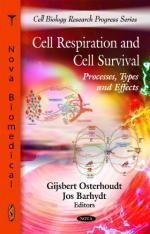|
This section contains 393 words (approx. 2 pages at 300 words per page) |
Cellular Respiration
As you all know, cellular respiration is one of the, if not the, most important process that goes on in our bodies and other animals' bodies today. Cellular respiration is the process that is opposite from photosynthesis. While plants are taking in carbon dioxide and water to make sugar and oxygen, cellular respiration uses the oxygen and sugar o make carbon dioxide, water and 36 ATP. The three "mini processes" that take place during cellular respiration are glycolysis, oxidative respiration, and the electron transport chain. Fermentation also occurs in some cases where there is no oxygen present.
Glycolysis is the first stage in cellular respiration. It starts with a six-carbon glucose. Then, two ATP come and are converted to two ADP and two phosphates. Those same phosphates are added to the glucose to make a six-carbon glucose phosphate. That is then divided into two 3-carbon sugar phosphates. ADP comes and leaves charged as ATP because of the phosphate. Without the phosphates the process finishes with two 3-carbon piruvates.
If there is no oxygen present after glycolysis, then the next process is fermentation. Fermentation takes the 3-carbon piruvates from glycolysis and adds and electron to them. The result is lactic acid in animals and ethyl alcohol and carbon dioxide from plants, yeast and fungi. Oxygen can then be added back to the lactic acid to form piruvate again.
After glycolysis or after the oxygen is added back to lactic acid from fermentation, the oxidative respiration, also known as the Krebs cycle, takes place. The 3-carbon piruvates are converted to acetyl-CoA. That is then turned into a 6-carbon citrate. After an electron is added to NAD+ to turn it into NADH, a 5-carbon molecule is formed. Then it turns into a 4-carbon molecule which is then recycled.
The electron transport chain is occurring the whole time that cellular respiration is taking place. It starts with a NADH and a FADH2. Electrons and hydrogen ions are added until the final results are NAD and 2H which yields 32ATP and turns O2 into H2O.
Over all there is 2ATP made during glycolysis, 2ATP made during Krebs cycle, and 32ATP made during the electron transport chain for a grand total of 36ATP!!! After all these products are made they are then converted back by photosynthesis and the cycle goes on and on and on...
|
This section contains 393 words (approx. 2 pages at 300 words per page) |


